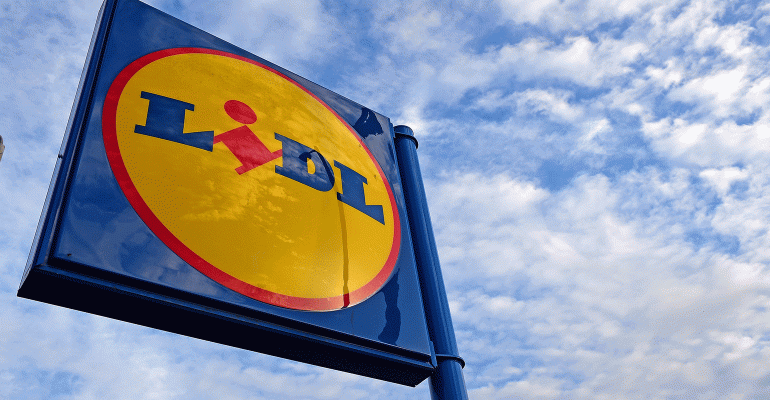German discount grocer Lidl’s entry in the US officially begins Thursday with its inaugural store opening, and it has already generated plenty of buzz and anxiety in the grocery sector.
A flyer on its web site gives some hints as to why Lidl is likely to be a formidable competitor: It offers a large seedless watermelon at half off for $2.49; four black angus beef patties at 22% off for $3.49 a pound; and a 22- inch kettle grill for $19.99. Lidl has said it will sell goods at up to 50% less than other US supermarkets.
That has raised fears that Lidl will spur even more price competition in the grocery sector. Walmart CFO Brett Biggs said at a recent conference that the company is “very mindful” of Lidl.
Lidl sits at a sweet spot of the market, the so-called deep discount sector where grocers including Trader Joe’s and Lidl’s German rival Aldi use store brands to keep prices low and win price-conscious shoppers. Lidl says some 90% of the groceries it sells will be exclusive brand products.
Deep discounters have seen the biggest increase in consumer grocery shopping visits over the past year, outpacing conventional grocery stores, supercenters, warehouse clubs and mass merchandisers, according to Nielsen data released on Wednesday. While consumer trips across all physical sales channels inched up 0.5%, trips to deep discounters rose 2.8%.
Getting more traffic is crucial at a time when many retailers and malls are struggling to get shoppers to their stores in the first place.
Nielsen data also suggested that there’s also plenty of room for growth for the deep discounters: only about 40% of households shop there, compared to the 97% of households that shop at traditional supermarket chains or the 75% that buy at supercenters.
Lidl, which operates about 10,000 stores in 27 countries throughout Europe, plans to open a total of 20 stores this summer in Virginia, North Carolina and South Carolina. By next summer, it said it plans to open up to 100 stores across the US East Coast.
Fung Global Retail & Technology has estimated that Lidl will generate about $1 billion in sales in the US in 2018 and $4 billion in 2020, assuming that it opens under 100 stores each year. To be sure, that’s still small. Kroger, for instance, generated sales of $115.3 billion last year.
While the snaps may be fleeting, Snapchat Geofilters are an extremely effective way to engage with your customers. Brands can create custom Geofilters that become accessible in specific locations, like in your business! Learn how the Yext Knowledge Engine can help with your location data.
See how the major chains stack up in terms of average store size
Unlike traditional grocers, Lidl’s US stores have a small footprint: 20,000 square feet with only six aisles. Lidl considers the small size a competitive advantage, offering shoppers a store that is easy to navigate. It’s a formula that has worked for grocers like Trader Joe’s, allowing them to take share away from traditional grocers. And, again like Trader Joe’s, Lidl’s emphasizes a selection of organic produce.
Unlike Trader Joe’s, Lidl’s store will have a fresh bakery at the entrance of each store. To drive traffic, it also will showcase limited non-food promotions featuring items from fitness gear to toys.
Lidl is already the largest grocery chain in Western Europe, topping Tesco and Walmart-owned Asda, according to Euromonitor data. Aldi has the No. 2 market share in that region.
In another sign that these deep discounters are a worry for US grocers, a recent Kantar Worldpanel study showed that in UK, for instance, Aldi and Lidl have outpaced other competition to grow at the fastest pace since 2015, with their combined sales in the 12 weeks ended May 21 up 19% to garner a record market share of 12%. Kantar Worldwide panel data showed that 62% of the UK population shopped in an Aldi or Lidl during the studied period, compared to just 58% a year earlier, an increase of 1.1 million households. Kantar data also indicated that their own label is a major source of growth.
Aldi, for its part, has its own aggressive US expansion plan. The company said earlier this week that it will expand to 2,500 US stores to become the third largest US grocer by the end of 2022, building on its strategy to remodel 1,300 stores by 2020.
To be sure, while Lidl has a lot of advantages as it prepares to enter the US, there are plenty of challenges to entering a new market, and 20 new stores, and even 100 new stores, is little more than a toehold. Other big names have stumbled making the same move. Fung Global noted Tesco’s failed Fresh & Easy concept in the US after initial fanfare.
by Andria Cheng

